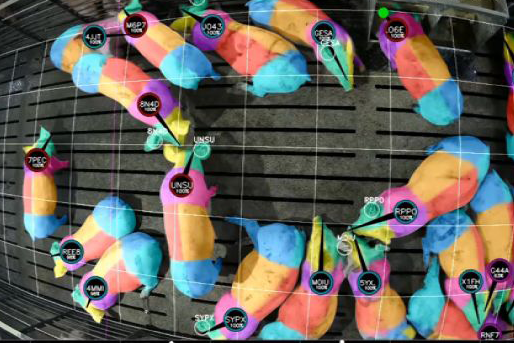PIC has incorporated a new trait into their genetic improvement programme: Reproductive Success. This leads to the maximum number of gilts reaching the third cycle without fertility problems. Sow farmers notice that this reduces early sow culls, meaning fewer rearing gilts are required and performance improves across the sow farm.
Sows that have to leave the farm too early are a major cost for pig farms. After all, a gilt easily costs £340 up to first mating. It is therefore important that a sow remains on the farm without any problems until at least the third litter; only then does the investment start to pay off. Moreover, fertility problems always affect the sow’s technical results and therefore the farm’s bottom line.
The reasons for the removal of sows are diverse. Some are forced (e.g. because of legwork, udder quality or fertility problems); others are voluntary (selection due to low production). Many dropouts of young sows with fertility as the cause occur after the first and second litter. They do not come into heat, they do not become pregnant, they abort and/or return for unknown reasons. The likelihood of sows that have reached the third litter still being discarded for fertility reasons is low.
Fig. 1: PIC’s Index Components

Therefore, in recent years PIC has invested in a new breeding characteristic: Reproductive Success. It was always expected that by breeding for improved productivity, fertility numbers would also improve. But that turned out not to be the case, says Saskia Bloemhof, geneticist at PIC. “We found that the trait reproductive success has a heritability rate of 15%. That makes it roughly comparable to the heritability rate of the trait litter size.” Since spring 2023, the trait has been included in the indices in PIC’s breeding evaluation. On farms, it leads to the maximum number of gilts reaching the third cycle insemination without fertility problems.
Figure 2: Sow removal rates in The Netherlands
Data from commercial farms improving data accuracy and relevance
Breeding for gilts with fewer fertility problems is therefore possible. However, it is difficult to select for this exclusively at the (top) breeding farms. There, conditions are ideal, so several traits around removal and dropout do not show up well.
To collect reliable data, PIC works with so-called shadow farms, where sisters of the top breeding animals are tested under commercial farming conditions. One or more of these locations are linked to each top breeding farm worldwide, including the Netherlands. PIC calls these GNX crossbred farms.
By including enough relatives, this contributes to a reliable genetic index for the new trait. “We have been collecting data from sows with at least three litters for over five years. In total, we receive data from 100,000 sows annually through this programme.” Bloemhof refers to this approach as unique in the world of pig breeding.
Fewer gilts to be reared
Thanks to the inclusion of the new characteristic in the index, sow farmers will notice that on average fewer young sows are leaving the farm because of fertility problems. “We are going to get more sows to the third parity,” Bloemhof sums up. This is not only positive for technical results, but sow farmers can reduce the number of rearing gilts. That Camborough Next Generation sows’ failure rate per cycle is already lower than the national average in The Netherlands, as can be seen in figure 2.

As with other traits on which PIC has worked consistently in breeding, the success will become clearly visible and the differences will increase. It is also a useful key figure for on-farm management. If sow farmers record dropout reasons well, they can use the management system to make analyses. Bloemhof expects a wide spread of sows reaching the third litter after the first mating without fertility problems. “It’s good anyway if pig farmers are more aware of it. That’s already a gain from working with the new trait.” On farms where too many sows fail to reach the third litter, pig farmers can look for underlying causes and take action.
PIC’s Technical Service experts are of course happy to help with this.




